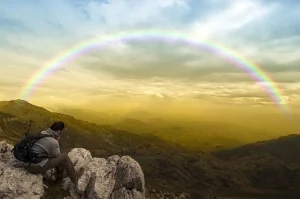Trip to India – Everything you need to know to organize your trip
When I received the guide to India, I was scared. I had probably never had a guide of more than 2000 pages in my hands.
It didn’t take me too long to understand that organizing a trip to India would be much less simple than I could imagine. Honestly, all those pages demoralized me rather than exciting me.
I started thinking about what to do and how to organize everything 3 months in advance. To then lose hope and understand that, since I had time, I would have been better off waiting to arrive and deciding on the spot. It actually took me a while to make this decision.
I alternated online research and reading in a guide whose size depressed me, with more or less firm decisions to let it go. At a certain point, in Mozambique , I decided to give up definitively, leaving an approximate itinerary which later turned out to be the fruit of my own imagination and which, once in India, I scaled down quite a bit.
On paper, as we know, you never realize the greatness of a country until you set foot there.
At least this applies to me who, with a map in my hands, began to draw up a travel itinerary that foreseen zero unexpected events, considered exaggerated distances by checking with the Google map, but did not consider traffic and many other factors, did not take into I count the tiredness and the climatic errors.
I understood that hoping to travel to India, unforeseen-free , is indicative of an overly optimistic soul.
Being able to travel all over India in a few weeks is unrealistic, it would be more correct to say that you are traveling in a specific Indian state. And it would be right to choose, with criteria, what we believe can suit us.
The visa granted to us is valid for 6 months and anyone who is interested in India and also has the time, this country deserves the entire six months, with a probable return a second time to do what was not done on the first trip.
After 3 months of traveling in India , I learned many things.
For the first time I also realized how times have evolved since my first time in Asia when the various hotel booking sites didn’t exist and everything was rarely organized online.
Accustomed to Africa where the internet isn’t really a great help, but everything is still done the old fashioned way, India from a certain point of view was simple to organize logistically. Yet there were quite a few problems I had to face.
But let’s start with what I believe each of us must ask ourselves before deciding to take on a trip to India and what you need to know during the organizational phase
If you are planning a trip to India, also read these posts – What to see in New Delhi in 1 day and What to see in Mumbai

Is India for me?
I believe that there are countries that can be tackled lightly, and others that instead require preparation but also that famous call . India, like Africa, belongs to this category of countries.
Going because it is becoming fashionable , and be careful when I say that it is becoming, because the first thing that surprised me was that, apart from a few tourist centres, I would not define the country as invaded by mass tourism , like some states a little further away, it is the worst choice you could make.
When I ask if India is for you I mean if you are ready to challenge chaotic, messy and dirty cities that put your nerves to the test?
Are you ready to argue with practically anyone why you are charging a price that will be triple if not more than what you should pay?
Are you ready to walk among piles of rubbish and don’t you mind seeing mice wandering around undisturbed, or dribbling among cows, wild boars and stray dogs?
Are you ready to endure incessant and annoying noise that will echo in your head almost like a mantra?
Some say you are never ready for India. I couldn’t help but agree, which is why I believe that although we are never really ready , on the other hand we must be prepared for what this enormous country will make us experience.
It can be stressful and heavy. Incessant and pounding. A particular charm that leaves many saying that you can hate it when you find yourself totally immersed in it, and then love it when you leave it.
Is India for me right now? Perhaps this is the right question.
Are you in the mental and physical condition to face this explosion of novelties which is not always easy to manage especially if you expect to live in a Western way in a country with deep-rooted traditions which, I believe, are difficult to understand?
If the answer is yes, then read on!
Click the button and find all search platforms and book your next trip yourself.
Read also: Travel to India: A Comprehensive Guide for an Unforgettable Journey
Is India a safe country even for a woman traveling alone?
Yes and even if for the first few weeks I thought it wasn’t totally, now I think I can say that it is, with a BUT the size of a house.
Alternative and freak India exists and is concentrated in a place called Goa .
Throughout the rest of the country, especially in the northern part which is highly conservative , women must cover their shoulders and legs.
Show respect for traditions but also to avoid absolutely annoying comments or looks.
I have seen girls in Rajasthan walking around in crotchless miniskirts, transparent tops complete with nipple piercings clearly visible, then complaining that the men on the street are annoying or that they make indecent proposals, when, on their part, the mistake is precisely in approaching such a complex and delicate culture with a superficiality typical of those who have no respect for traditions which, however distant from ours, should be approached with greater tact.
The Indian is notoriously sexually repressed, love marriages are not common (although growing), women have the role of staying at home and public outpourings are not socially accepted. We add that the Western woman is seen as easy and dressing inappropriately invites us to fuel these thoughts, consolidating them rather than doing the opposite.
I have heard stories of women traveling who have had to face unpleasant situations, nothing dangerous but deeply embarrassing, despite adopting absolutely appropriate attitudes, but it seems that by shouting and pointing out to him and all the people around it results in a great shame for the dirty man and help coming from those around us.
The woman in conservative areas must dress appropriately and must avoid too much confidence, which for an Indian otherwise means an implicit invitation to be able to ask for more.
If you relate with these things in mind, a single woman will travel in the country without encountering any problems.
The right destination in the right season – Where to travel in India
The best time to visit most of the country is during the cold and rainless season, i.e. the months from November to May .
The states of Rajasthan and Madhya Pradesh are excellent in these months, remember that it can get quite cold. In Goa and central India temperatures remain pleasant. In the South it is always hot but in May and June the temperatures become suffocating. In the summer months, however, the doors of the Himalayas open between August and September, while in the rest of the subcontinent the monsoons occur, but here the trekking season opens. India can therefore be a destination 12 months a year, the secret lies in choosing the right states at the right time.
How much time do I need to travel to India?
A mini tour of Rajasthan can fill up in as little as 10 days, provided you do it with a car to speed things up. However, the ideal time to enjoy the enchantment of parts of this enormous and powerful country would be 14 days .
Two 6-month visas are not enough to visit the entire enormous country, therefore starting from 10 days there are no limits to discover the Subcontinent!
How to choose the right itinerary in India
India put me in great difficulty due to its size but also due to the infinite offer of travel options. 6 months are not enough for the visa, let alone 3 months or 3 weeks.
Planning a trip to India therefore takes time , first of all to understand which route you want to follow and then you have to think realistically.
For example, if you decide to travel by train or bus , don’t be fooled by the times on Google maps, it will certainly take longer.
Trains are perpetually late , which is why I have learned to take buses for distances of less than 6 hours and rely on trains for those longer than 10.
I took about 10 trains and none were ever on time, one even arrived 4 hours late for a 2 hour journey.
For an idea of itinerary ideas, I refer you to a well-written and complete post written by Angelo Zinna, which very well summarizes 6 travel itineraries in India for two weeks , so I won’t dwell too much on this “technical” aspect but instead limit myself to highlight some interesting combinations that can help choose one or two states of the country rather than another.
How to choose your travel itinerary? Wondering exactly what kind of experience you want from India .
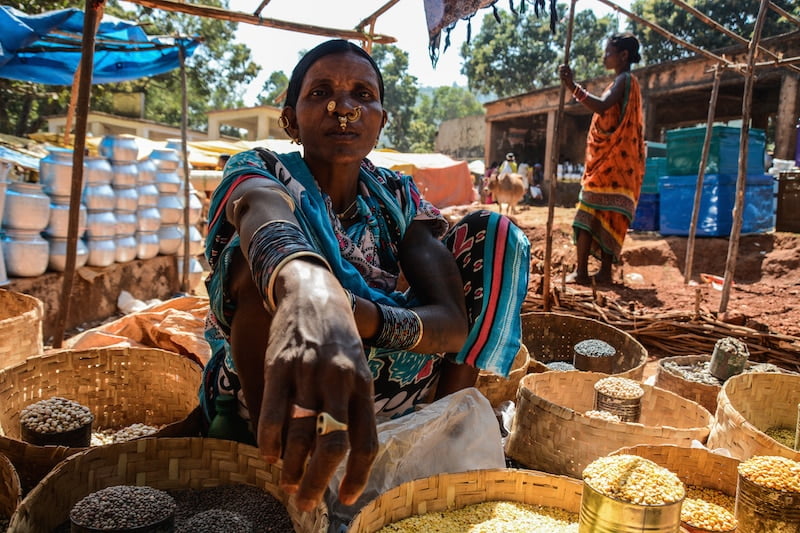
Practical organization of the trip to India
Organizing your trip to India using the internet is quite simple, especially when it comes to choosing where to sleep.
But like all large countries with roads that are not always excellent and monstrous traffic, if the adventure can be planned as you go as long as you have time available, things change when time is limited. .
Finding where to sleep is the simplest thing, transport and connections, travel and the physical and psychological tiredness that will be felt in the long run are all elements that need to be considered, always keeping in mind that a trip to India does not it certainly represents a relaxing and peaceful holiday , but it also represents a great challenge to one’s organizational skills.

Entry visa to India
To travel to India you need an entry visa which allows a stay of up to 6 months. To obtain more information on obtaining it at the Embassy, Consulate or agency click here .
If you plan to stay for 30 days then you can request it online on the official website .
Tour Operator Vs Do it yourself
As always, the options are divided into two main lines, do-it-yourself versus organization supported by an operator . Basically I didn’t encounter any major difficulties in organizing the trip, but everything became clear to me only once I arrived in Delhi.
Here, where I spent the first week, I began to understand how trains and public transport work, and slowly began to outline an itinerary that began in Rajasthan and ended, 3 months later, in Kerala (with internal flights).
Do-it-yourself India is possible , provided you have time and are open to the many unexpected events that you will encounter along the way.
Generally, those who have between 10 days and two weeks available prefer to rely on a local operator to organize the itinerary to be carried out by car with a driver.
The reason why this is the most common practice for traveling in India is that the distances are large , even if it doesn’t seem like it from the map.
I would also add that transport, especially trains, are always late and above all, the main and long-distance routes must be reserved well in advance.
Relying on a TO and traveling India by car has many significant positive aspects.
First of all, you can be sure that the timetable is respected and there are no delays. But above all you are guaranteed an appropriate and realistic itinerary in relation to the time available.
Do -it-yourself slows down and is not immune to unexpected events, which while those who have a lot of time available accept almost with joy, those who have little time appreciate less.
An ideal solution for those who travel alone but would prefer to have company, which is understandable in this gigantic land, is to join group trips (even just for a few days) so as to make the best use of their time and discover a small part of a country that A lifetime is not enough to travel it completely!
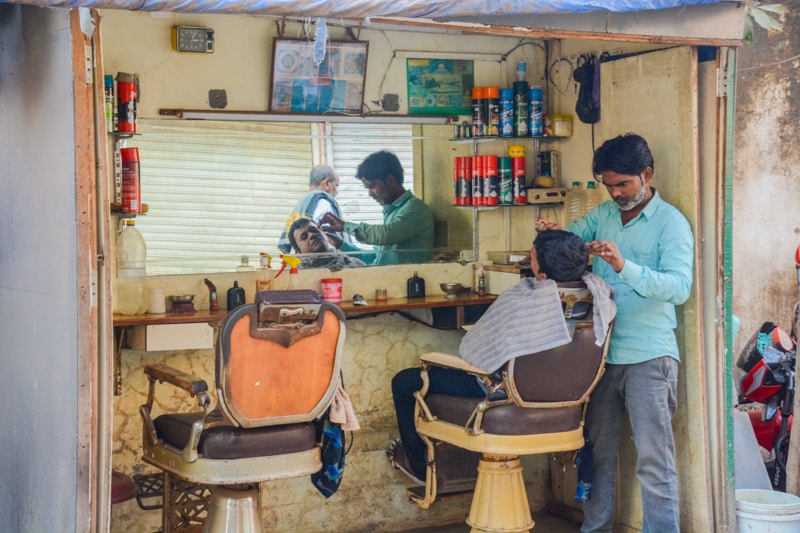
Means of transport in India – Where you want to get to in India you arrive….sooner or later
In terms of transport it is not badly organised, in fact in some states, such as Rajasthan , the journey was quite simple and everything went very well.
As we move further away from the graces of this magical state, things get a little more complicated.
Generally speaking, there are four travel methods , unless you have your own vehicle: train , bus , private car with driver or group trip .
I advise against trying to self drive unless you want to go crazy, I wrote above.
Let’s start with the most popular and adventurous, the one that tells the story of Indian life while on the move: the train!
THE INDIAN TRAIN
India has an incredible railway network, practically all the locals travel on trains and this paragraph deserves more than a word. I apologize for the length.
Precisely because the train is the most popular means of transport , and precisely because India is inhabited by almost 2 billion people , trains are practically always full, often ending up on a waiting list if you don’t book days in advance.
Therefore, never take it for granted that you will find tickets from one day to the next, it is advisable to book in advance, especially during the holidays, and always consider alternative routes or it could happen, as has happened to me several times, that you change route despite of being able to take a train and leave making numerous detours which extended the journey by 3 days.
The classes of Indian trains
This is another somewhat complex thing to understand. Because I always reserved from one day to the next or two days in advance, I always found a place in the sleepers , or in the cheapest category.
The carriages are more or less the same for everyone, the bathrooms in the SL are unsuitable and smell of urine at unbearable levels, which is why I have always tried to drink as little as possible by limiting my trips to the toilet.
The classes are as follows:
- SL – Sleeper class. The most common, three beds one above the other, each carriage carries up to 72 passengers. Obviously there is no air conditioning and sheets or pillows are not included.
- 1A – The most expensive, it practically costs the same as flying. The carriages are for 18 people, and there is also privacy for couples
- 2A – Air conditioning, spacious, curtains and one light bulb per bed. Sheets are included. Up to 46 people fit in these carriages.
- 3A – Air conditioning, similar to 2A but without reading light, sheets included. Approximately 64 passengers enter per carriage.
- 2S – Seater class, there is no air conditioning and instead of beds you sit. Ideal for short trips, a last resort if you really can’t help but leave and there are no alternatives
- CC – Cars where you can sit but with air conditioning.
A compromise between comfort and price is the 3A.
TakTal – The Last Minute of the railways
These tickets are last minute, i.e. those that are bought overnight and which involve an additional tax. This is the last hope for those who hope to be able to leave.
Trains are often late, so in this case too, rely on timing, but not too much. Which is why for those who only have two weeks to spare, this solution could be risky. To check the status of trains in real time, the site http://enquiry.indianrail.gov.in/ntes/ is providential. At least to make peace with the wait and monitor delays.
How to book train tickets
Website – It would be wonderful if only it could be used with international cards, but since it’s not possible I use it as a reference at least to understand which routes I can follow and to know, before the agent tells me, how many people are on the waiting list There are. To use the site you need to register, which is less simple than you might think, as an Indian telephone number is practically mandatory.
Apparently the site now offers the possibility of registering even if you are abroad, although it continues to ask for an Indian telephone number.
Simply enter your number and then email a copy of your passport.
In theory it should work but in practice it doesn’t. I was only able to log in once I bought the Indian number which allowed me to verify the account. Maybe things will change in the future, for the moment I will leave the URL of the official website of the Indian Railways www.irctc.co.in
Agency – Generally for the train ticket they ask for a commission of 100 rupees, which honestly I’m happy to pay to save myself the trip to the station, where I generally get bounced from one counter to another without ever really accomplishing much.
Station – Queues and some bouncing from one counter to another, to buy the ticket as long as you already know where you want to go. Generally the operators speak a bit of English, but if you don’t want to waste time then the best solution is to give these 100 rupees to an agent to do it.
Book with international credit cards
India makes things difficult. He does one thing to help you but then he does another that makes this first change absolutely useless.
In the case of trains, until March 2016 it was not possible to register on the railway website if you did not have an Indian telephone number.
They made it possible to register by emailing a copy of their passport, which incidentally never worked for me despite constant requests, and by entering their phone number.
In fact this procedure has never worked so don’t rely too much on it. At the time, the ClearMyTrip
app was available for foreign travellers, allowing them to book train tickets and which worked until a few months ago given that it is no longer allowed to pay with an international card. So it’s useless to hope to be able to book trains in advance and from your country of residence because at the moment it doesn’t work.
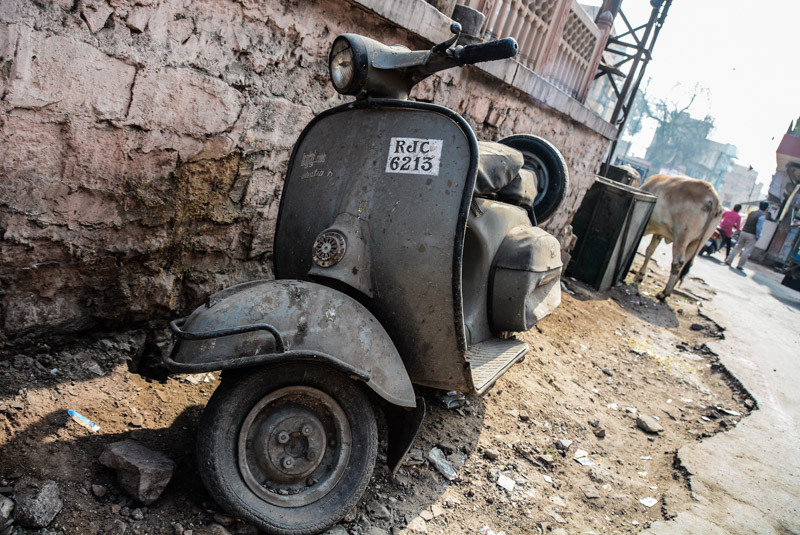
Buses in India
Personally, I have taken many trains but many more buses.
I have never had much love for the train, for the Indian one, although it is an experience worth having but as a situation I have always found it uncomfortable, noisy and not very comfortable .
So the train wins as an EXPERIENCE but the sleeper buses were wonderful for me.
These buses, sleepers, in fact have cabins in which you can lock yourself and are very comfortable.
Not all buses are sleeper or comfortable, especially in the most remote areas, where trains don’t even arrive anyway, so there are no alternatives, but you can be sure of one thing. Whether it’s train or bus, somehow you get to your destination.
Buses are usually booked directly at the station or for longer and more well-known routes, for example in Rajhastan, it is possible to book them at hotels or agencies.
Flights
Given the enormous size and distances, flying is also an excellent option, especially if you want to avoid 20 hours on the train. The country boasts numerous internal airlines and if booked in advance the flights are also quite cheap.
When I bought domestic flights I always looked for the different options on Skyscanner and I never paid more than €50 each way.
Domestic routes are covered by: IndiGo, Airindia, SpiceJet, Goair,, AriAsia. They practically cover the entire country at absolutely affordable prices.
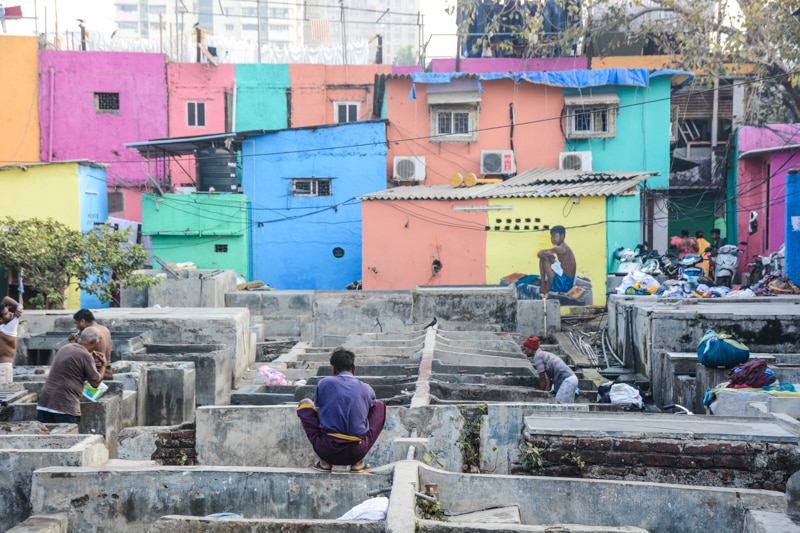
Internet and Sim data
I have tried different ones and my preference goes to Airtel, in second place is Vodafon, but the first one works better.
Given 4 g, the promotions vary depending on the state in which the card was made, so when recharging it is necessary to underline in which city it was purchased (Delhi or Mumbai or Cochin etc), because the promotions are not always the same.
The data always worked pretty well, except when in fairly remote tribal areas.
Generally speaking, as of today, 4 gigabytes cost around $7 with airtel. You can top up in the numerous shops that have the Airtel sign.
The main Indian telephone companies are:
- Airtel *** Absolutely the best, takes you practically everywhere. Be careful if you buy the card in a street shop because sometimes they confuse Airtel with Aircel (which is the cheaper sister and which doesn’t work very well)
- Vodafon ** basically almost never worked
- Idea ** Works in rural areas for some reason
- Jio ** New phone company, apparently works very well
- Aircel
Trusting in wifi is risky, it is not good nor always available, everything is speeded up simply by using the data in the hotspot in the certainty of being able to connect. I advise against hoping for fast and stable free wifi because unfortunately in many cases I also had difficulty sending emails.

Pay by credit and debit card
It can’t always be done, in the most touristy places it’s generally not a problem but don’t be surprised if you are recharged by 3% which is how much they have to pay in commission.
So any bill you pay by card will be overcharged by 3%. If you don’t want to pay this fee then the only solution is to pay in cash.
As always, I recommend traveling with the two debit cards Revolut and N26 , which offer exchange rates on the day, therefore better than banks, and apply decidedly rather low withdrawal commissions (Revolut 2% after the first €250 free and N26 instead ‘1.7%)
On several occasions to reserve hotels and rooms, which in India I generally reserve on Agoda , I recommend checking the possibility of paying with Paypal or debit/credit card. On many occasions I paid directly via the Agoda website, saving the 3% that I would have otherwise paid on site.
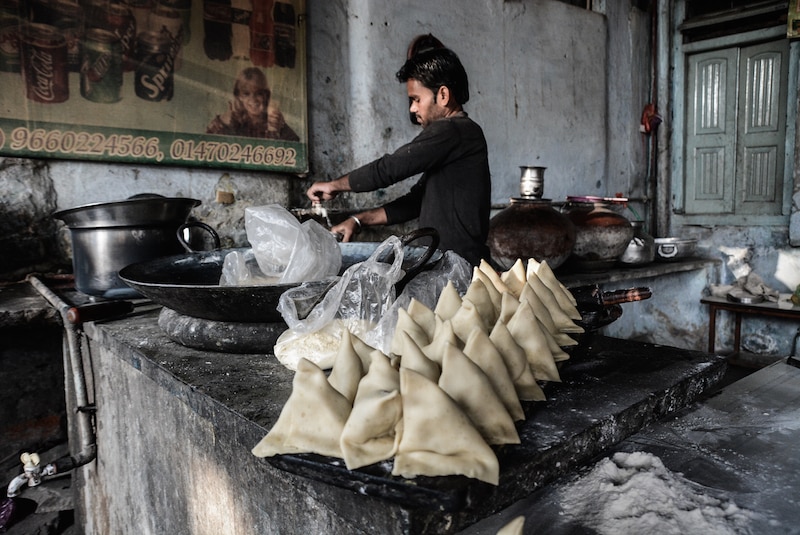
What should not be missing in your travel backpack
I’m not here to make a list of clothes or the number of underwear to wear but the following are things that have practically always come in handy for me:

The (not always true) myths about India
The size of the country, which is a sub-continent, obviously cannot help but give travelers a vast and different travel experience depending on the itinerary they follow.
New Delhi is for example very different from Mumbai , Kerala is not Rajasthan and so on.
There are many clichés about the country and in this paragraph I want to disprove some of them.
Cows and dirt everywhere
In truth, it is enough to go a little further south than the best-known states and the cows, which in some cities, especially in Rajasthan and Varanasi, seem to outnumber people, suddenly disappear.
I say the same thing about dirt. To say that India is clean would be a gamble, I believe that ecology is essentially lacking a culture, but the rubbish is at times impressive and disgusting, I will remember the dinner in Pushkar with a stench of rubbish coming from the streets as one of the worst of the months in journey, or the corners where the smell of urine spread despite vain attempts to cover it with incense, is not a constant. Just go to Kerala to discover an almost clean India. India is therefore not all dirty.
They are all Hindus
India actually offers a wonderful potpourri of traditions and religions. Just because you are Indian does not necessarily mean you are Hindu.
I probably really liked the meeting with an Indian Muslim most of all, thanks to whom, among other things, I began to understand something about India and Indians , which best summarized this apparent impossibility of belonging.
It is dangerous for women
I admit that based on the stories that had reached my ears, the fact that it could be dangerous firstly surprised me and secondly worried me.
It wasn’t easy learning to navigate the streets where men stared at me as if I were naked, and there were numerous arguments, but I believe that this country is as dangerous as many tall people can be.
Care is needed , in particular clothing and discretion especially in interpersonal relationships between men and women, to ensure that the trip proceeds pleasantly and without any hitches.
Read also: How to organize a trip to Ethiopia




